Whether you're new to working out or are a seasoned veteran, arm day seems to hold a special spot for most, especially those who identify as iron addicts. The issue is that most seem to find themselves choosing the same arm workouts and following the same old routine. Maybe it's time for a refresh and here's how to pump some new life into your game plan. Check out our top exercises to revamp your arm day and get the size and strength you've always wanted.
Strong arms not only look good and can make you feel more confident in your physique, but they also help you with everything from crushing your workouts and boosting your athletic performance to carrying kids and groceries to moving furniture. To help you get the sculpted arms you’ve always wanted, we’ve compiled a list of the best arm workouts for men — specifically targeted at your biceps and triceps.
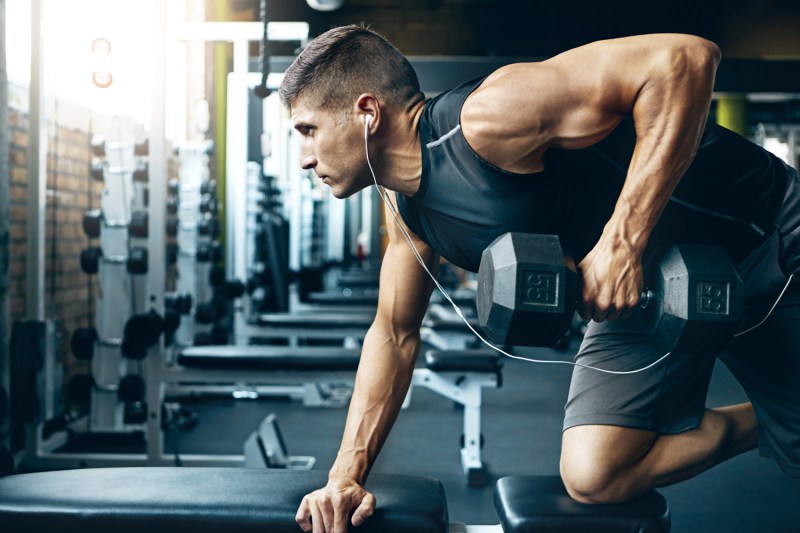
Best tricep exercises
While many people newer to fitness give biceps all the love because they are the ones you can easily catch sight of in the mirror, the triceps, which are the muscles in the back of your upper arms, hold the key to maximizing your power and functional strength with any pushing task.

Cable-rope tricep extension
- Equipment needed: Tricep rope cable attachment, wall mount cable station (If you don't have access to a cable station, you can use resistance bands secured overhead on a pull-up bar.
- Reps: 11-15
- Sets: 3
Step 1: Secure the cable rope attachment in the top position of a cable machine.
Step 2: Stand about 2 feet back from the top of the pulley with your feet shoulder-width apart, grasping one end of the cable attachment rope in each hand.
Step 3: Engage your core and glutes so that your torso is rigid and braced.
Step 4: Keep your elbows tucked at your sides while you extend your arms down until they are fully straightened.
Step 5: Slowly bring your arms back up, focusing on squeezing your triceps as you do so.
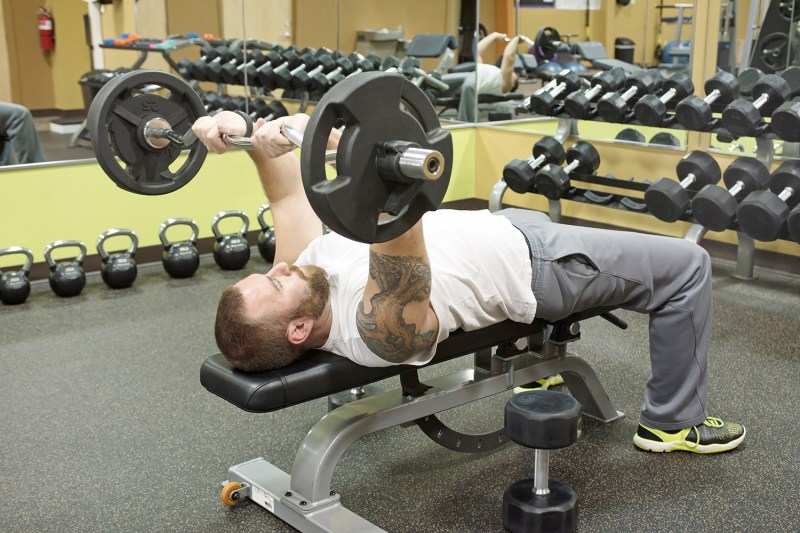
Skullcrushers
- Equipment needed: Dumbbells or barbell and weights
- Reps: 8-12
- Sets: 3-5
Step 1: Lie on a bench, holding a couple of dumbbells or a barbell. The weight should be light enough that you can maintain proper form for each rep but heavy enough that you’re near exhaustion by the end of each set.
Step 2: Engage your core, draw your shoulder blades together, and raise your arms up straight toward the ceiling.
Step 3: Keeping your elbows directly above your shoulders, use your triceps to move just your forearms to slowly lower the dumbbells until they reach the level of your ears or the barbell is just above your head.
Step 4: Return to the starting position.
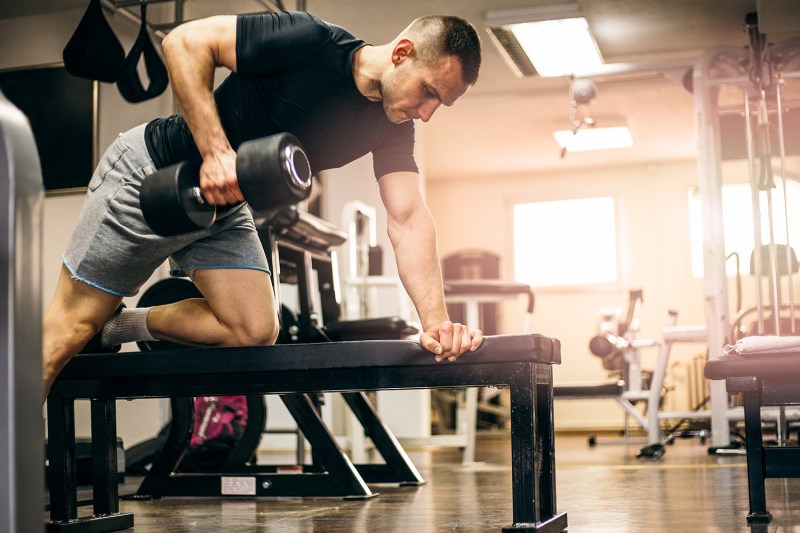
Dumbbell kickbacks
- Equipment needed: Dumbbell or kettlebell
- Reps: 8-10 (per arm)
- Sets: 3-4
Before getting started with this one, we have an important safety note. It’s especially important to not overdo the weight with this exercise, as doing so can strain your shoulders. Instead, focus on proper form and use a light enough weight that you’re not straining to lift it, but rather using your triceps to fully control the movement.
Step 1: Place your right foot on the floor, kicked back behind you, and grab the dumbbell in your right hand. Your left knee and hand should be on the bench as if on all fours. Your back should be straight and core engaged.
Step 2: Lift your right arm so that your elbow is tucked at your side, your upper arm is alongside your torso, and your forearm is perpendicular to the floor.
Step 3: Extend your forearm behind you until your arm is fully straight and your forearm is parallel with your body.
Step 4: Slowly return to the starting position.
Step 5: After completing all the reps on one side, switch sides.
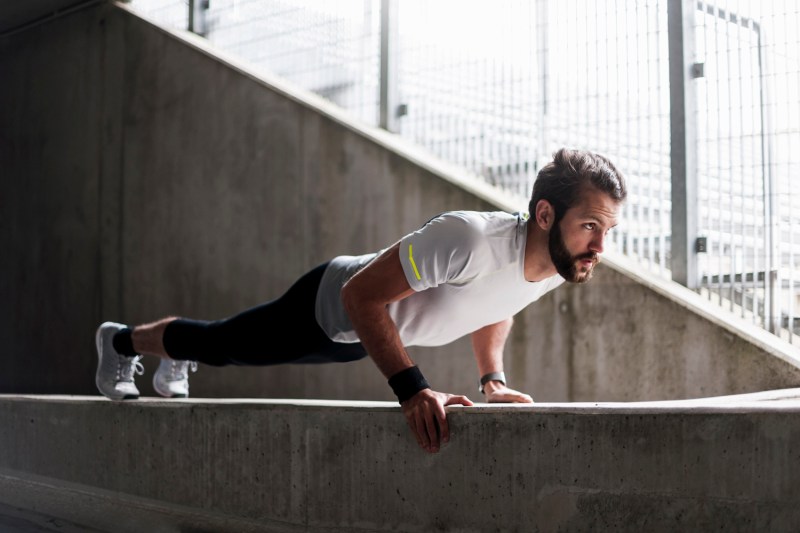
Diamond pushups
- Equipment needed: None
- Reps: 10
- Sets: 3-4
This tough pushup modification really targets your triceps and requires quite a bit of core strength for balance.
Step 1: Get into a normal pushup position, but instead of placing your hands shoulder-width apart, move them in toward each another in the center so that your fingertips and thumbs touch and form a diamond.
Step 2: Lower your chest toward the ground by bending your elbows until they are flexed to a 90-degree angle. You should feel more stress on your triceps.
Step 3: Press through your palms to return to the starting position.
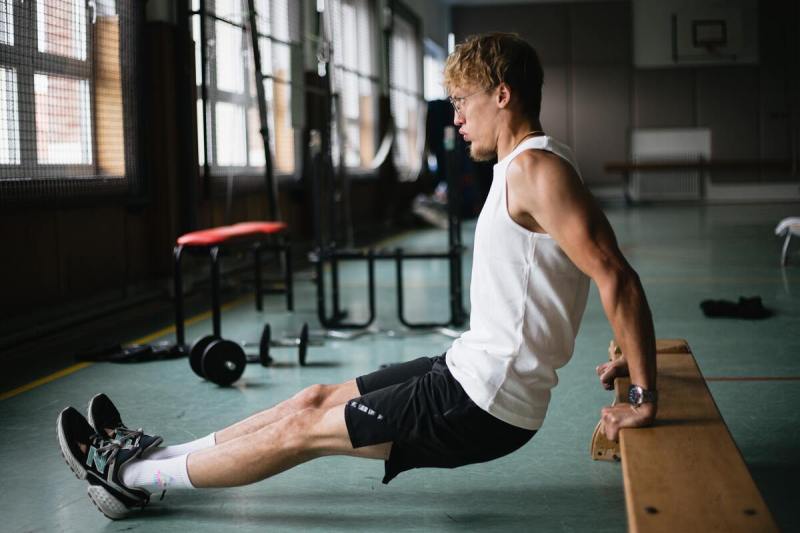
Tricep dips
- Equipment needed: Bench or chair
- Reps: 10-15
- Sets: 3-4
Step 1: Facing away from a bench or chair, place your palms on either side of your waist on it with your fingers facing forward. Fully extend your legs in front of you so your weight is resting on your heels.
Step 2: Keeping your elbows tucked into your sides, bend them until they reach a 90-degree angle.
Step 3: Push back up through your palms to return to the starting position.

Best bicep exercises
Who doesn’t want to have biceps that pop out like iron rocks and allow you to lift anything in sight? Here are the best exercises for strong biceps.
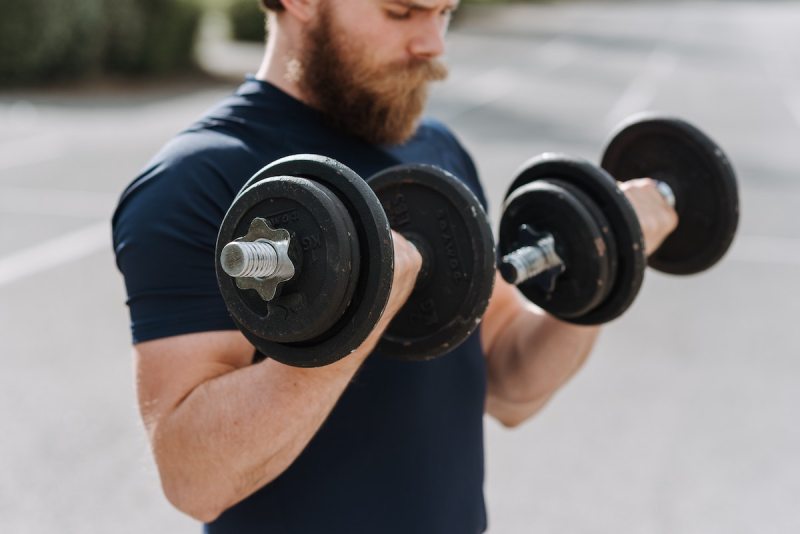
Dumbbell biceps curls
- Equipment needed: Dumbbells
- Reps: 10-12
- Sets: 3-5
Step 1: Hold a dumbbell in each hand at your side, keep your elbows tucked along your torso, and engage your core.
Step 2: Either simultaneously or in an alternating fashion, bend your elbows to bring the dumbbell up to your shoulders until your elbows are fully bent.
Step 3: Slowly lower back down without allowing gravity to do any of the work.
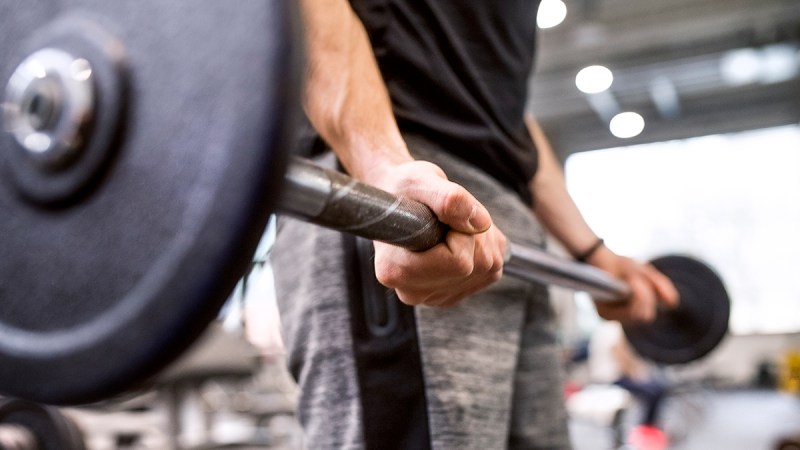
EZ bar curls
- Equipment needed: Barbell and weights
- Reps: 10-15
- Sets: 4-5
Tip: Move slowly throughout (moving quickly will allow momentum to assist you) and keep a fully upright position with your shoulders back.
Step 1: Grab a barbell with both hands with your palms facing up.
Step 2: Keeping your elbows as close to your sides as possible and your core engaged, bend both elbows to bring the weight to your chest.
Step 3: Return to the starting position in a slow, controlled fashion without relying on gravity.
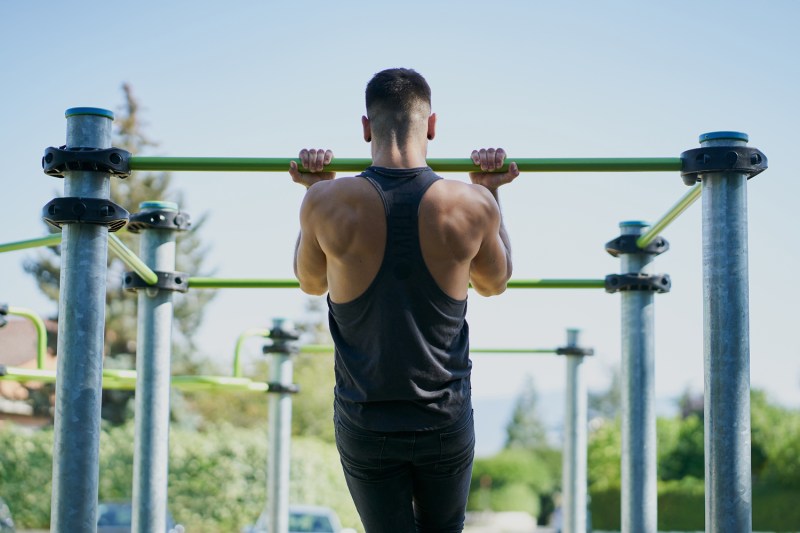
Chin-ups
- Equipment needed: Pull-up bar
- Reps: 4-6
- Sets: 4-5
Pullups target the triceps, while this easier variation relies more on your biceps.
Step 1: Using an underhanded grip (palms facing you), grab the pull-up bar with your hands shoulder-width apart and core engaged.
Step 2: Drive your elbows toward the ground and use your biceps, shoulders, and upper back to raise your body above the bar until at least your chin clears the top of the bar.
Step 3: Slowly lower back down until your arms are fully extended.
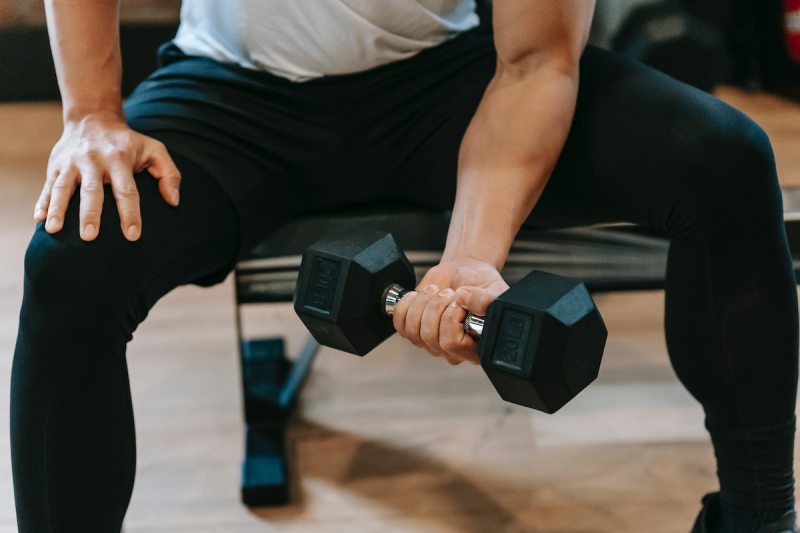
Concentration curls
- Equipment needed: Dumbbell
- Reps: 10-12
- Sets: 3-4
Step 1: Sit on a bench with your legs spread and a dumbbell in one hand.
Step 2: Rest your elbow on your thigh so that your upper arm is perpendicular to the floor.
Step 3: Bring the weight toward your shoulder by contracting the biceps muscle on the working arm.
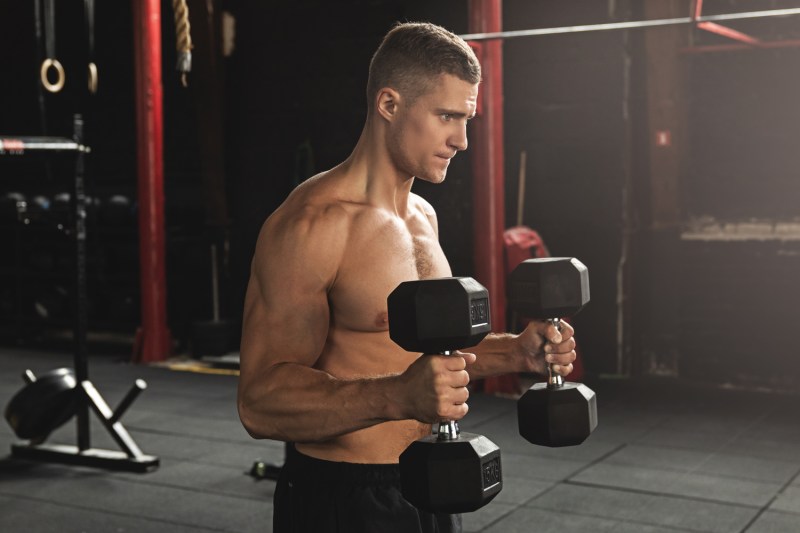
Incline hammer curls
- Equipment needed: Dumbbells
- Reps: 12
- Sets: 4-5
Step 1: Adjust a bench so that it is at a 45- to 60-degree angle.
Step 2: Recline back with your arms hanging down on each side, directly below your shoulders, holding a dumbbell such that your palms are facing inward.
Step 3: Keeping this inward-facing palm position, curl your arms until the dumbbells reach your shoulders.
Step 4: Slowly lower the weights back down, again being sure not to allow gravity to do all the work.
Whether or not you choose to do all of these exercises for a solid arm day, or pick and choose some to add to your already existing routine, either way, you can't go wrong!




